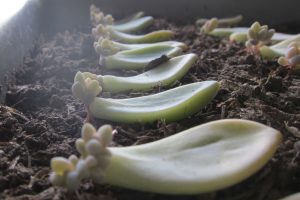How to Grow a Succulent? Is it duplicated? (Succulent Guide)
Succulents literally means “with essence and water”, there are many varieties. Succulents are plants that can collect water on their petioles, stems, roots and leaves. Its leaves are full of tiny hairs, as if they were about to burst. In this way, it has no difficulty in increasing the water retention rate by slowing down the evaporation. The secret of being long-lived plants comes from this skill.
What Should Be Considered When Choosing a Succulent?
With the increase in the popularity of terrariums, the most preferred reason for the succulent, which is living its golden age, is undoubtedly its different beauty and easy maintenance. Since there are different types of succulents, you should choose the most suitable one for you when choosing your succulent. Various succulents and sub-hundred succulents consisting of Aloe, Aeonium, Adromischus, Cotyledon, Graptopetalum, Graptosedum, Crassula, Echeveria, Gasteria, Haworthia, Kalanchoe, Pachyphytum, Rochea, Senecio, Peperomia, Rhipsalis, Sansevieria, Sedum and Tillandsia groups are in these groups. . If you live in cold regions, choosing a succulent from the Echeveria group will be healthier for your plant. On the contrary, if you are in a very hot area, Haworthia succulents will be much more comfortable for you and will be a long-lasting companion.
The easiest to care for and the most suitable succulent groups to grow at home can be listed as Sedum, Sedum, Kalanchoe, Senecio, Crassula. In fact, many plants grown at home are in the succulent class. The most known succulent species of these can be considered as Kalanchoe (Kalanchoe). This plant, whose broken branches can be re-rooted, spreads very easily.

Kalanchoe – Image: Jamestown Feed and Seed
Another succulent variety called Aloe, Aloe Vera and Medicinal Aloe vera is a species that almost everyone encounters in one place. Aloe Vera likes humus soils, and the soil must be permeable and the pot in which it will be grown must have drainage holes.

Aloe Vera – Image: Bakker
Haworthia fasciata, also called Snake Skin or Zebra, is one of the most suitable succulent varieties to grow at home.

Haworthia fasciata – Image: Pinterest
Haworthia fasciata, also known as tears of love, is one of the most common forms of succulents. However, the name is not very well known.

Haworthia fasciata – Image: gardensonline
How to Plant a Succulent?

You need to find a suitable pot for your succulents you buy from construction markets and greenhouses. The trick here is that the pot size should not be too big or small.

Place your succulent in your pot, where you put enough soil in its trunk, taking care not to intertwine the leaves, and surround it with soil, making sure that its roots do not get air.
Your plant will take root within 2 weeks after repotting or planting in the first pot. Choosing a container with a water drain at the bottom will provide a more comfortable maintenance in terms of water accumulation at the bottom.
Succulent Care

They are non-rooted plants that expand not in height but in width. Since they are plants of very hot regions, they do not want too much water. It is sufficient to water every 10 days on hot days and once every 20-30 days on winter days.
Since they like sandy desert soil, they should not be replaced with other soils. Pots without a drain outlet should not be preferred. Waterlogging at the bottom of the pot can cause the roots to rot.
It should be viewed in semi-light, semi-dark environments, in a location where it will not receive direct sunlight.
For succulents, not too hot weather but too cold weather is risky, at the same time, over-watering rather than under-watering can kill the plant.
Succulent Propagation
Succulent is a very easy plant to propagate because it takes root very quickly and can hold onto the soil immediately. While doing the succulent reproduction process, we first break off pieces from the lower leaves of our plant.


Make sure that no leaves are left on the trunk. Then, as you can see below, we cut the flowered part of the head with the help of scissors from the body.


We leave the succulent pieces we cut off for 1 day and leave them on the soil of our plant or on the soil that is slightly moistened with a sprayer suitable for growing succulents.

Within 2 weeks, you will notice that the leaves that have been cut will develop tiny roots.

After the leaves root, your tiny succulents will appear. Over time, the leaf it feeds on will rot and your tiny succulents will be left alone. After this flowering process, you can plant it in the ground. Do not water for the first 24 hours and wait for it to get used to its soil.

Are you wondering what will happen to the succulent stem you cut? First of all, after planting the part you cut separately, continue to water your stem succulent regularly.


You can see the juvenile succulents emerging on it over time.















